Discover the Architectural Marvels of Qu Family Compound Heritage
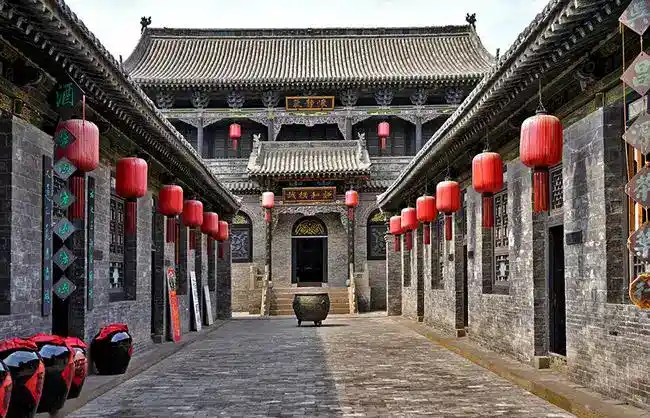
An Essential Guide to Visiting Qu Family Compound Heritage
In This Guide
- An Essential Guide to Visiting Qu Family Compound Heritage
- The Rich History and Legends of Qu Family Compound Heritage
- Main Highlights: What You Absolutely Can’t Miss
- Planning Your Visit: A Practical Guide
- Tickets: Prices, Booking, and Tips
- How to Get There: A Complete Transportation Guide
- Local Cuisine and Accommodation Nearby
- Frequently Asked Questions
- Final Thoughts on Your Trip
Visiting the Qu Family Compound Heritage is like stepping into a captivating narrative of China’s rich history, where the past intertwines with the present in a splendid display of architecture and culture. Nestled in the heart of Shanxi Province, this remarkable compound stands as a testament to the opulence and sophistication of the Qing Dynasty, offering a unique glimpse into the life of one of China’s prominent merchant families.
As you wander through its vast courtyards and intricately designed halls, you’re not just observing structures; you’re experiencing the echoes of a bygone era. The Qu Family Compound, known as 渠家大院 (Qú Jiā Dà Yuàn), is renowned for its stunning craftsmanship, showcasing exquisite wood, brick, and stone carvings that tell stories of wealth, loyalty, and familial bonds. Each corner of the compound reveals hidden treasures, from the elaborate artifacts that decorate the main halls to the serene beauty of the gardens, inviting you to pause and reflect on the artistry of ancient Chinese culture.

Qu Family Compound Heritage.
Whether you are an architecture enthusiast, a history buff, or simply a curious traveler, this heritage site promises an enriching experience that transcends its physical boundaries. Prepare to immerse yourself in a world where traditional values and artistic excellence converge, making your visit to the Qu Family Compound an unforgettable chapter in your journey through China.
Key Highlights of Your Visit:
- Stunning Architecture: Marvel at the intricate wood and stone carvings that tell the stories of the Qu family’s illustrious past.
- Cultural Significance: Discover the historical context of the compound and its role in the lives of wealthy merchants during the Qing Dynasty.
- Scenic Beauty: Enjoy the tranquil gardens and courtyards that provide a peaceful escape from the bustling world outside.
- Authentic Experience: Engage with live performances and exhibitions that bring the rich cultural heritage of Shanxi to life.
As you plan your visit, prepare to uncover the layers of history and artistry that make the Qu Family Compound a must-see destination on your journey through China.
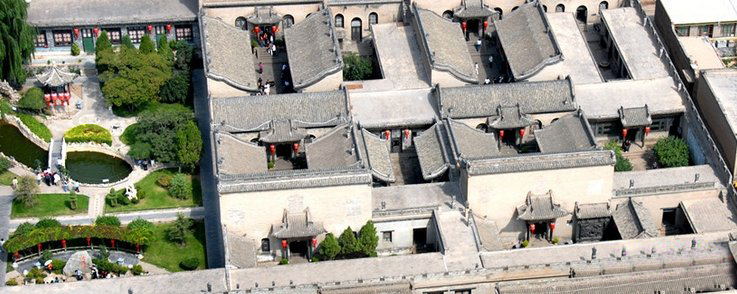
Qu Family Compound Heritage.
The Rich History and Legends of Qu Family Compound Heritage
The Qu Family Compound, known in Chinese as 渠家大院 (Qú Jiā Dà Yuàn), stands as a testament to the grandeur and intricacies of Chinese heritage, particularly from the Qing Dynasty era. Nestled in the picturesque landscape of Shanxi Province, this architectural marvel not only showcases stunning traditional design but also embodies the rich history and legends of the Qu family, a prominent lineage of merchants and philanthropists.
A Glimpse into History
The origins of the Qu Family Compound date back to the late Ming Dynasty and the flourishing years of the Qing Dynasty, when the family rose to prominence through trade and commerce. Merchants of Shanxi were particularly known for their business acumen, and the Qu family was no exception. Their enterprise thrived on the silk and grain trade, which allowed them to amass considerable wealth and prestige.
The compound itself encompasses several courtyards, each featuring intricately designed structures that reflect the architectural style of the era. With its harmonious blend of wood, brick, and stone, visitors can explore over 300 rooms, all showcasing exquisite craftsmanship that tells tales of the family’s affluent lifestyle.
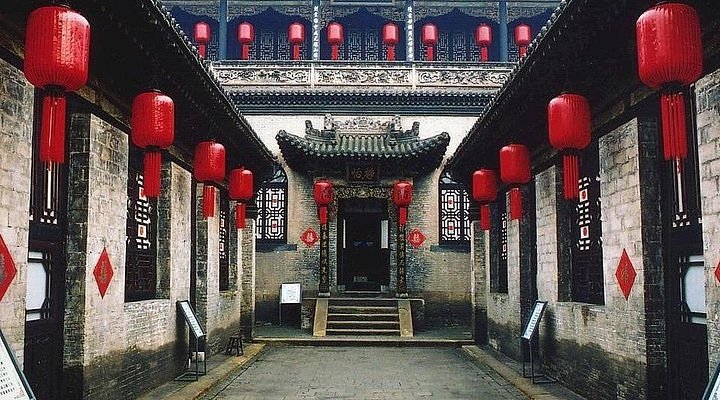
Qu Family Compound Heritage.
Architectural Significance
The Qu Family Compound is an exemplary model of traditional Chinese courtyard architecture, characterized by its symmetrical layout and intricate decorations. The design is not merely aesthetic; it was developed to serve practical purposes as well, such as facilitating family gatherings and ensuring privacy.
Key features include:
-
Rich Carvings and Inscriptions: The compound boasts ornate carvings on door frames, window panels, and beams, each telling a story or imparting traditional wisdom. Many of these carvings include auspicious symbols, believed to bring good fortune to the inhabitants.
-
Courtyards of Meaning: Each courtyard within the compound serves a unique purpose, with spaces for living, socializing, and even spiritual practices. The largest courtyard is particularly notable for its role in hosting family gatherings and celebrations.
-
Cultural Artifacts: Among the treasures within the compound are items that belonged to the family, including traditional furniture and ceremonial objects, each carrying historical significance.
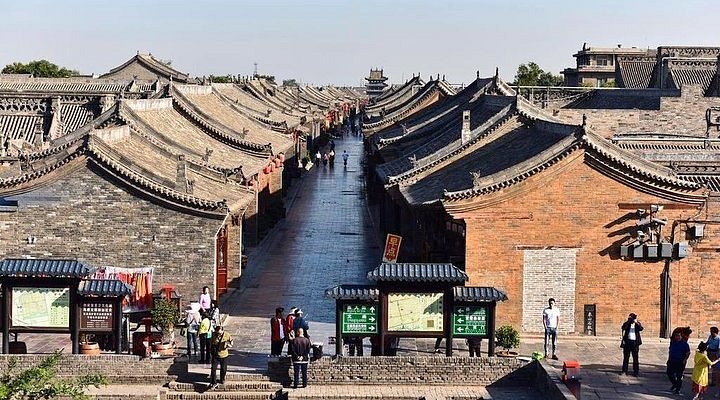
Qu Family Compound Heritage.
Legends of the Qu Family
The lore surrounding the Qu family is as rich as their history, filled with tales of generosity, wisdom, and resilience. One enduring legend tells of a benevolent patriarch who, upon discovering his neighbors in distress due to famine, opened the gates of the compound to share his family’s wealth. This act of kindness not only solidified the family’s reputation but also established a legacy of philanthropy that is still revered today.
Another captivating story involves the famed “All-Seeing” Glass Sphere, a mirrored globe that purportedly allowed the family to monitor their vast estate. This artifact symbolizes the family’s vigilance and their commitment to safeguarding their heritage.
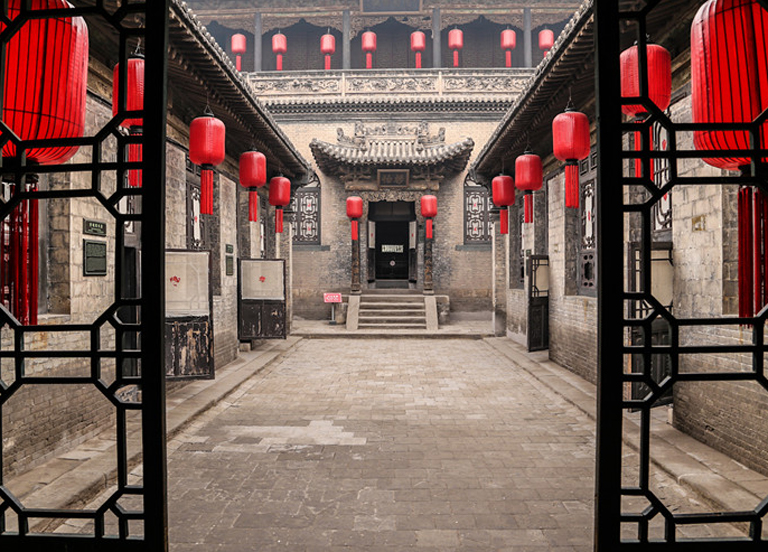
Qu Family Compound Heritage.
Cultural Impact
The Qu Family Compound has also made its mark in contemporary culture. Its architectural beauty and historical significance caught the eye of filmmakers, most notably in the acclaimed movie Raise the Red Lantern directed by Zhang Yimou. The film brought international attention to the compound, allowing audiences around the world to appreciate its grandeur and the rich narrative woven into its walls.
Visiting the Compound
For travelers seeking a deeper connection to Chinese history and culture, a visit to the Qu Family Compound offers an immersive experience. As you walk through its courtyards and admire the intricate details, you’ll find yourself transported back in time, resonating with the lives of the Qu family and their enduring legacy. Whether you are an architecture enthusiast, history buff, or simply curious about Chinese culture, the Qu Family Compound invites you to explore its rich tapestry of stories and traditions.
In conclusion, the Qu Family Compound is not merely a historical site; it is a living narrative that encapsulates the spirit of a bygone era. Its legends, architecture, and the ethos of the Qu family beckon travelers to uncover the layers of history that continue to shape the cultural identity of China today.
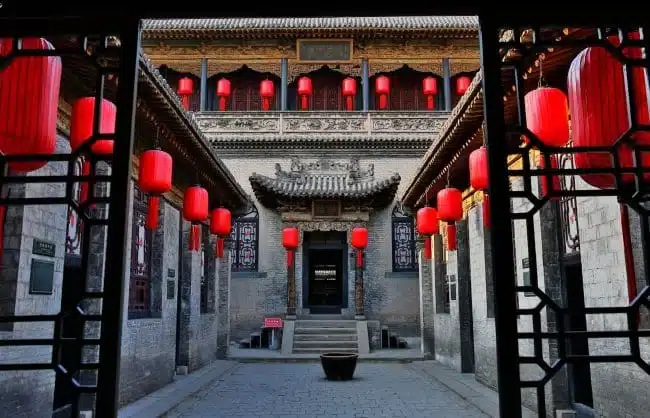
Qu Family Compound Heritage.
Main Highlights: What You Absolutely Can’t Miss
Discover the Unmissable Highlights of the Qiao Family Compound
The Qiao Family Compound, or Qiao Jia Da Yuan (乔家大院), stands as a testament to the opulent lifestyle of a wealthy Shanxi merchant family during the Qing Dynasty. Nestled in Qixian County, near Pingyao, this architectural marvel offers an immersive glimpse into Chinese history, culture, and artistry. Here are the key highlights that you absolutely cannot miss during your visit:
1. Zai Zhong Hall (在中堂)
This is the heart of the compound and the largest residential area. As you step inside, you’ll be greeted by intricate wood, brick, and stone carvings that reflect the exquisite craftsmanship of the era.

Qu Family Compound Heritage.
- Must-See Treasures:
- Rhinoceros Gazing at the Moon Mirror (犀牛望月镜): A one-ton bronze mirror symbolizing good fortune, located in Courtyard No.3.
- Carved Pearwood Nine-Dragon Screen (九龙屏风): A stunning 2.7-meter high screen gifted by Empress Dowager Cixi, noted for its jade inlays.
- Nine-Dragon Lantern (九龙灯): Another remarkable piece from Cixi, this redwood lantern features hidden mechanisms that enhance its design.
- “All-Seeing” Glass Sphere (万人球): Often considered the world’s first monitor, it adds an intriguing layer to the Qiao family’s story.
2. Dexing Hall (德兴堂)
This hall serves as a cultural hub, showcasing museum-style exhibitions along with live folk performances, including traditional wedding ceremonies. It’s an excellent opportunity to experience the vibrant cultural heritage of the region.
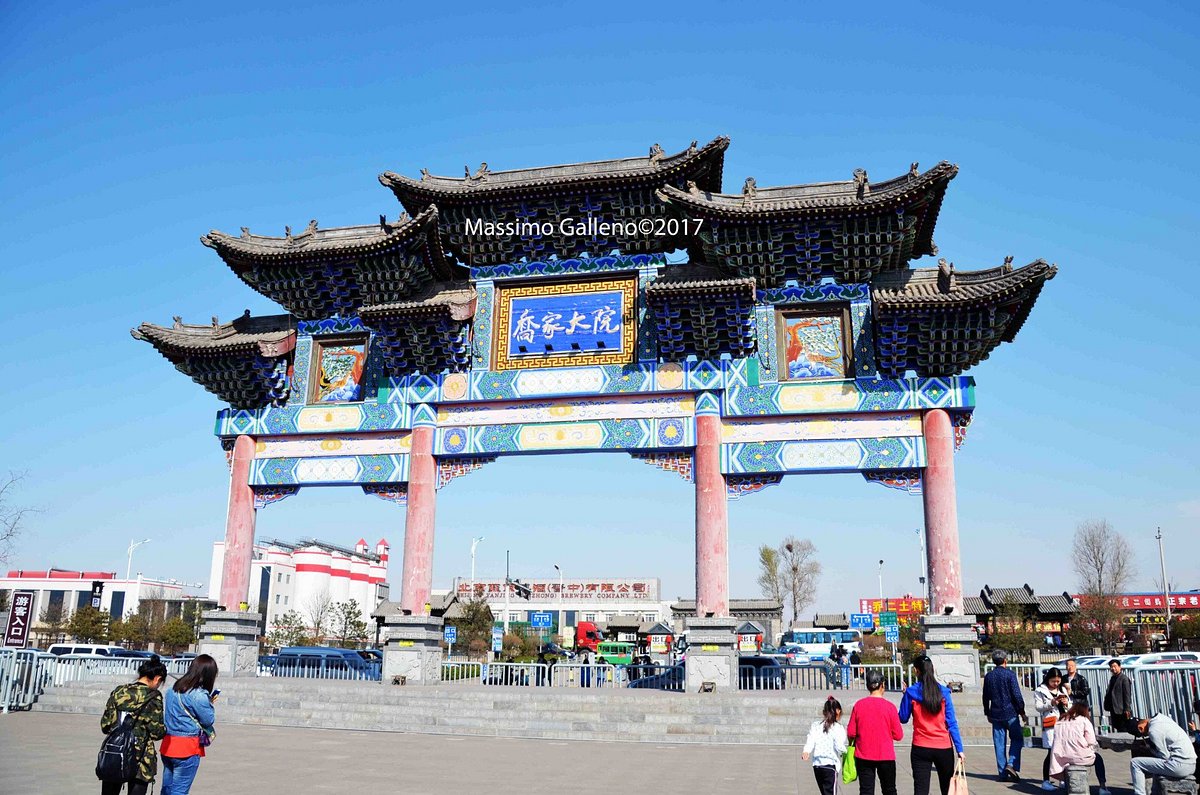
Qu Family Compound Heritage.
3. Baoyuan Hall (保元堂)
Constructed by the fourth-generation family member Qiao Chao Wu, this hall features a sundial and traditional symbols for marriage and longevity. Here, you can also find unique cultural souvenirs, perfect for bringing a piece of history home.
4. Ningshou Hall (宁守堂)
A quieter space that was once the home of the family’s founding ancestor, Qiao Guifa. This hall offers a serene atmosphere, ideal for photography and reflection on the family’s legacy.

Qu Family Compound Heritage.
5. Qiao Family Garden (乔家花园)
After exploring the courtyards, relax in this charming northern-style garden. With its picturesque pavilions, flowing water, and lush greenery, it provides a serene escape from the bustling courtyards.
Iconic Photo Spots
Capture the essence of your visit with these stunning backdrops:
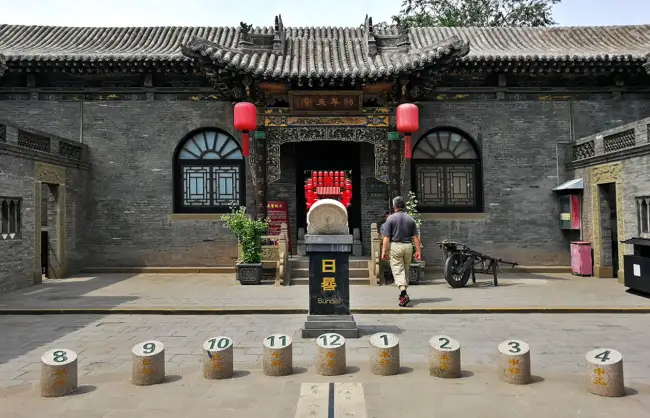
Qu Family Compound Heritage.
- The Archway Gate (乔家大院牌楼): This vibrant entry structure showcases classic Qing-style design and is a must for any traveler’s photo album.
- Hundred Longevity Characters Wall (百寿图): An artistic display featuring various calligraphy styles of the character for “longevity” (寿), perfect for a unique cultural snapshot.
Visitor Tips
- Plan Your Timing: The best seasons to visit are spring (April–June) and autumn (September–November) when the weather is mild. For a quieter experience, try visiting in the afternoon.
- Comfort is Key: Wear comfortable shoes, as the compound features uneven stone paths and numerous courtyards to explore.
- Purchase Tickets in Advance: Tickets are RMB 115 (approximately USD 16). Consider buying them online to avoid long queues.
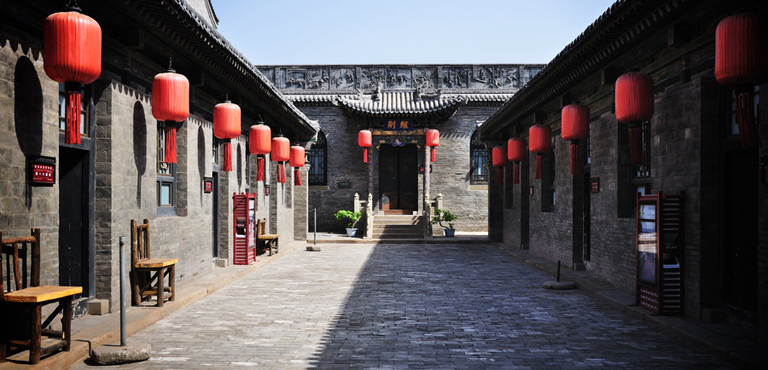
Qu Family Compound Heritage.
Final Thoughts
Visiting the Qiao Family Compound is not just a journey through architecture but an exploration of the rich tapestry of Chinese culture and history. From the intricate designs of the halls to the tranquil beauty of the gardens, every corner of this compound tells a story waiting to be discovered. Don’t miss this opportunity to step into a world where the past comes alive!
Planning Your Visit: A Practical Guide
Discovering the Qiao Family Compound: A Practical Guide
Visiting the Qiao Family Compound (渠家大院) is like stepping back in time to the grandeur of the Qing Dynasty, offering a unique glimpse into the life of a prosperous Shanxi merchant family. This guide will help you navigate your visit, ensuring you make the most of this historical treasure.
Location and Access
The Qiao Family Compound is situated in Qixian County, about 45 minutes northeast of the ancient city of Pingyao in Shanxi Province. The compound is easily accessible by car or arranged transport.

Qu Family Compound Heritage.
- Address: Qiao Family Compound, Qixian County, Jinzhong City, Shanxi Province, China.
- Opening Hours: Daily from 08:00 to 18:00.
- Ticket Price: RMB 115 (approximately USD 16 / SGD 22). Tickets can be purchased online via WeChat or at the entrance.
Duration of Visit
Plan to spend around 2.5 to 3 hours exploring the compound. This allows you ample time to appreciate the intricate architecture, historical artifacts, and serene gardens.
What to See
The compound features a remarkable layout consisting of six major courtyards and numerous smaller courtyards, totaling 313 rooms. Here are key highlights to seek out during your visit:
- Zai Zhong Hall (在中堂): The main residence of Qiao Zhiyong, this hall is home to exquisite treasures, including:
- Rhinoceros Gazing at the Moon Mirror: A national treasure symbolizing good fortune.
- Carved Pearwood Nine-Dragon Screen: An exquisite gift from Empress Dowager Cixi.
-
Nine-Dragon Lantern: A beautifully crafted redwood lantern with hidden mechanisms.
-
Dexing Hall (德兴堂): Hosts exhibitions and live folk performances, offering cultural insights.
-
Baoyuan Hall (保元堂): Features a sundial and symbols representing marriage and longevity.
-
Ningshou Hall (宁守堂): A quieter area perfect for photography, showcasing the compound’s original architecture.
-
Qiao Family Garden (乔家花园): A picturesque garden that offers a tranquil escape amidst your exploration.
Best Photo Spots
Capture the essence of the compound with stunning photographs at these locations:
- The Archway Gate (乔家大院牌楼): The vibrant entrance, showcasing classic Qing-style architecture.
- Hundred Longevity Characters Wall (百寿图): A striking backdrop featuring various calligraphy styles of the Chinese character for “longevity.”
Tips for an Enjoyable Visit
-
Best Time to Visit: The compound can be visited year-round, but spring (April–June) and autumn (September–November) offer the most pleasant weather. Summer can be hot and crowded, so plan accordingly.
-
Wear Comfortable Shoes: Expect to walk on uneven stone paths and navigate through narrow courtyards.
-
Stay Hydrated: Carry your own water, as facilities are limited within the compound.
-
Guided Tours: Consider hiring a guide for deeper insights into the history and architecture of the compound. Many tours can be arranged in advance.
-
Mobility Considerations: The compound features many steps and uneven surfaces, making it less suitable for visitors with limited mobility.
Alternative Options
If you have time, consider visiting the nearby Wang Family Compound, known for its larger size and fewer crowds. It offers a similar experience with even more elaborate architecture and finer craftsmanship.
Suggested Itinerary
For a well-rounded experience in the region, follow this itinerary:
- Morning in Pingyao: Start your day exploring Pingyao Ancient City, rich in history and culture.
- Visit Shuanglin Temple: A short 15-minute drive from Pingyao, this temple is renowned for its exquisite Buddhist art.
- Afternoon at Qiao Family Compound: After lunch, head to the compound to immerse yourself in its historical charm.
Conclusion
The Qiao Family Compound is not just a site to visit; it’s an opportunity to connect with China’s rich cultural heritage. By planning ahead and following this guide, you’ll ensure a memorable and insightful experience in one of China’s most significant historical landmarks. Enjoy your journey through time!
Tickets: Prices, Booking, and Tips
Ticket Information for Visiting the Qiao Family Compound
A visit to the Qiao Family Compound is not just an exploration of an architectural marvel but also a journey into the rich tapestry of Chinese history and culture. To ensure you have a seamless experience, here’s everything you need to know about ticket prices, booking options, and essential tips for your visit.
Ticket Prices
- Standard Ticket: RMB 115 (approximately USD 16 / SGD 22)
This ticket grants you access to the entire compound, allowing you to immerse yourself in the vast courtyards and intricate architecture of this historic site.
Booking Options
- Online Booking: Tickets can be conveniently purchased online via WeChat, which is highly recommended to avoid long queues at the entrance. Aim to book at least one week in advance for the best experience.
- On-Site Purchase: If you prefer spontaneity, tickets are also available at the on-site ticket office. However, be prepared for potentially lengthy wait times, especially during peak visiting hours.
Visiting Hours
- Opening Hours: 08:00 AM – 06:00 PM daily
For the best experience, consider visiting in the afternoon when crowds tend to thin out, allowing for a more peaceful exploration of the grounds.
Duration of Visit
Plan to spend 2.5 to 3 hours at the compound. This timeframe is ideal for leisurely wandering through the various halls and courtyards, appreciating the intricate craftsmanship and historical significance of each space.
Travel Tips
- Best Time to Visit: While the compound is open year-round, spring (April–June) and autumn (September–November) are the most pleasant seasons, offering mild weather and fewer tourists.
- Comfort is Key: Wear comfortable shoes, as you will be traversing uneven stone paths and navigating multiple courtyards.
- Stay Hydrated: Facilities are limited within the compound, and drinking stalls are spread apart. Carry your own water to keep hydrated during your visit.
- Mobility Considerations: Be aware that the compound features many steps, high thresholds, and uneven surfaces, making it less accessible for visitors with mobility challenges.
Additional Insights
For those keen on enriching their visit, consider engaging a guide or joining a private tour. This way, you can uncover hidden stories and historical nuances that may not be apparent at first glance. If you’re interested in exploring more of the region, several tour packages are available that include visits to other significant sites such as the nearby Wang Family Compound.
By planning ahead and following these tips, your visit to the Qiao Family Compound will surely be a memorable chapter in your exploration of China’s historical and cultural landscape.
How to Get There: A Complete Transportation Guide
Navigating Your Way to the Qiao Family Compound
Visiting the Qiao Family Compound (渠家大院) promises an enriching journey into the heart of traditional Chinese history and architecture, nestled in the picturesque Shanxi Province. To ensure a seamless experience as you embark on this cultural adventure, here’s a comprehensive guide on how to reach this iconic site.
Getting to Pingyao
Most travelers start their journey to the Qiao Family Compound from the nearby ancient city of Pingyao, a UNESCO World Heritage Site renowned for its well-preserved architecture and rich history. Here are the best options for reaching Pingyao:
- By Air: The nearest major airport is Datong Yungang Airport (DAT), located approximately 100 kilometers away. From the airport, you can take a taxi or book a private transfer to Pingyao.
- By Train: Pingyao has a railway station with high-speed trains connecting it to major cities like Beijing and Xi’an. The journey from Beijing to Pingyao takes about 4-5 hours.
- By Bus: Long-distance buses operate regularly from nearby cities to Pingyao. The bus station is centrally located, making it easy to find transport.
Traveling from Pingyao to the Qiao Family Compound
Once you arrive in Pingyao, the Qiao Family Compound is just a short trip away. Here are your transportation options:
- By Car: The most convenient way to reach the compound is by car. It’s about a 45-minute drive (approximately 40 kilometers) northeast of Pingyao. You can rent a car or hire a taxi for a direct trip.
- By Bus: Public buses run from Pingyao to Qixian County, the area where the Qiao Family Compound is located. Check local schedules for the latest departures. The bus ride will take around 1 hour.
- By Tour Service: Consider joining a guided tour that includes transportation. This option often provides insightful commentary and eliminates the hassle of navigating local transport.
Local Transportation Options
Once you arrive at the Qiao Family Compound, getting around the site itself is straightforward:
- Walking: The compound is expansive, covering over 1 hectare (2.6 acres), with multiple courtyards and halls. Comfortable walking shoes are recommended as you explore the intricate architecture and detailed carvings.
- Guided Tours: Opt for a guided tour to gain deeper insights into the history and significance of the various structures. Many guides are available on-site, and pre-booked tours usually include transportation.
Best Times to Visit
To maximize your experience at the Qiao Family Compound, consider the following tips regarding timing:
- Peak Seasons: The best times to visit are during spring (April to June) and autumn (September to November) when the weather is mild and pleasant.
- Time of Day: Mornings can be crowded, especially with tour groups. Aim for an afternoon visit for a quieter experience and a chance to enjoy the compound at a leisurely pace.
Final Tips
- Ticket Purchase: Admission is RMB 115 (approximately USD 16). It’s advisable to buy tickets online in advance to avoid long queues.
- Facilities: Be aware that restroom facilities are limited within the compound. Carry water and snacks to keep hydrated during your visit.
- Accessibility: The compound has uneven surfaces and many steps, making it less suitable for visitors with mobility issues.
With this guide in hand, you’re well-prepared to embark on a captivating journey to the Qiao Family Compound, where history and culture await. Enjoy your exploration of this remarkable heritage site!
Local Cuisine and Accommodation Nearby
When visiting the Qiao Family Compound, immersing yourself in the local cuisine and finding comfortable accommodation can enhance your cultural experience. Here, we’ve curated some delightful options that reflect the rich heritage of Shanxi Province.
Culinary Delights
1. Shanxi Noodles (刀削面, Dāo Xiāo Miàn)
A visit to Shanxi is incomplete without trying its famous hand-sliced noodles. These thick, chewy noodles are often served in a fragrant broth with various toppings, making for a hearty meal. Look for local eateries like Lao Shanxi Noodle House near the compound for an authentic experience.
2. Pingyao Beef (平遥牛肉, Píngyáo Niúròu)
This local delicacy is known for its unique flavor and tenderness. The beef is marinated and then slow-cooked with spices, often served with steamed buns. Qiao’s Beef Shop, just a short drive from the compound, is a popular spot for visitors.
3. Vinegar from Shanxi (山西醋, Shānxī Cù)
Renowned as one of the best in China, Shanxi vinegar adds a distinctive tang to various dishes. Try it in a dipping sauce or drizzled over noodles. Zhang’s Vinegar Shop offers tastings and insights into the vinegar-making process.
4. Local Snacks
Don’t miss out on trying Jinzhong Pancakes and Fried Dough Sticks (油条, Yóutiáo) from street vendors in the area. These quick bites are perfect for a snack while exploring.
Places to Stay
1. Pingyao Yide Hotel
Located about 45 minutes from the Qiao Family Compound, this charming hotel captures the essence of traditional Chinese architecture with modern amenities. Guests can enjoy comfortable rooms, a beautiful garden, and authentic Shanxi breakfasts.
2. Qiao Family Compound Hotel
Just steps away from the compound itself, this hotel offers convenient access to the historical site. The rooms are decorated in a traditional style, and the on-site restaurant serves local dishes, allowing you to savor the flavors of Shanxi without venturing far.
3. Pingyao Harmony Hotel
This boutique hotel is known for its serene atmosphere and attentive service. Set in a restored courtyard, it combines modern comforts with historical charm. The hotel’s restaurant serves an array of traditional dishes, making it a great spot for dinner after a day of exploration.
4. Jinzhong Guesthouse
For travelers seeking a more budget-friendly option, Jinzhong Guesthouse provides simple yet cozy accommodation. Its friendly staff can also recommend local dining spots to enhance your culinary journey.
Final Tips
- Dining Hours: Most local restaurants open for lunch around 11 AM and dinner from 5 PM. Dinner is the perfect time to savor Shanxi delicacies after a day of exploring.
- Reservations: While many places accept walk-ins, it’s advisable to call ahead, especially during peak tourist seasons.
- Local Markets: Explore local markets for a chance to sample street food and purchase regional specialties to take home as souvenirs.
By indulging in the local cuisine and choosing the right accommodation, you can enrich your visit to the Qiao Family Compound and immerse yourself in the vibrant culture of Shanxi Province. Enjoy your culinary adventure!
Frequently Asked Questions
Frequently Asked Questions about Qu Family Compound Heritage (渠家大院)
1. What is the Qu Family Compound?
The Qu Family Compound, known as 渠家大院 (Qú Jiā Dà Yuàn) in Chinese, is a historic traditional courtyard mansion located in Shanxi Province. It offers a glimpse into the life of a wealthy merchant family during the Qing Dynasty, featuring intricate architecture and rich cultural heritage.
2. Where is the Qu Family Compound located?
The compound is situated in Qixian County, Jinzhong City, in Shanxi Province, approximately 45 minutes by car from the ancient city of Pingyao, a UNESCO World Heritage Site known for its well-preserved architecture and cultural significance.
3. What are the opening hours and ticket prices?
The Qu Family Compound is open daily from 8:00 AM to 6:00 PM. Tickets are priced at RMB 115 (approximately USD 16 or SGD 22). It’s advisable to purchase tickets online in advance to avoid long queues, especially during peak tourist seasons.
4. How much time should I allocate for my visit?
Plan to spend about 2.5 to 3 hours exploring the Qu Family Compound. This duration will allow you to fully appreciate the architecture, cultural exhibits, and the serene gardens while enjoying the intricate craftsmanship displayed throughout the site.
5. What are the must-see highlights within the compound?
Key highlights of the Qu Family Compound include:
– Zai Zhong Hall: The main residence showcasing exquisite treasures, including the famous Rhinoceros Gazing at the Moon Mirror.
– Dexing Hall: Features engaging exhibitions and traditional folk performances.
– Baoyuan Hall: Offers insights into symbols of marriage and longevity.
– Qiao Family Garden: A tranquil space with beautiful landscaping ideal for relaxation and photography.
6. Is there a recommended route for visiting the compound?
Yes! A suggested walking route is:
1. Main Entrance
2. Zai Zhong Hall (Courtyards 1-5)
3. Dexing Hall
4. Baoyuan Hall
5. Qiao Family Garden
6. Ningshou Hall
This route guides you through the most significant areas while allowing you to appreciate the craftsmanship and stories behind each section.
7. What should I wear and bring for my visit?
Wear comfortable shoes, as you will be walking on uneven stone paths and navigating various courtyards. It’s also wise to bring your own water, as facilities such as restrooms and drink stalls are limited within the compound.
8. Are there any accessibility considerations?
The Qu Family Compound features many steps, high thresholds, and uneven surfaces, making it unsuitable for visitors with limited mobility or those using wheelchairs. If you require special accommodations, it’s best to plan accordingly or consider alternative sites.
This enchanting site offers a rich tapestry of history, architecture, and culture, making it a must-visit for anyone interested in understanding China’s past.
Final Thoughts on Your Trip
As you conclude your exploration of the Qiao Family Compound, you carry with you not just memories of exquisite architecture and cultural richness, but also a deeper understanding of China’s storied past. This heritage site stands as a testament to the lavish lifestyle of the Shanxi merchant families during the Qing Dynasty, encapsulating the grandeur of a bygone era.
Reflecting on Your Visit
- A Journey Through Time: Walking through the courtyards, you’ve traversed the paths once trodden by the Qiao family, witnessing their legacy in every intricate carving and ornate hall.
- Cultural Richness: From the stunning Zai Zhong Hall to the serene Qiao Family Garden, each section of the compound offered a unique glimpse into traditional Chinese life, showcasing art, architecture, and familial values that have withstood the test of time.
- Film Fame: Your visit also connects you to the cinematic world, as you stand where the critically acclaimed Raise The Red Lantern was filmed, adding a contemporary layer to the historical narrative.
Final Thoughts
Whether you came for the stunning craftsmanship, the rich history, or simply the allure of exploring one of China’s most famous movie sets, the Qiao Family Compound offers a profound experience. We encourage you to take your time and soak in the atmosphere—every corner reveals stories waiting to be discovered.
As you journey onward, let the inspiration from this visit weave into your own story, reminding you of the resilience and artistry of a culture that continues to captivate the world. Embrace the spirit of exploration, and carry the essence of the Qiao family with you, wherever your travels may lead you next. Safe travels and happy adventuring!